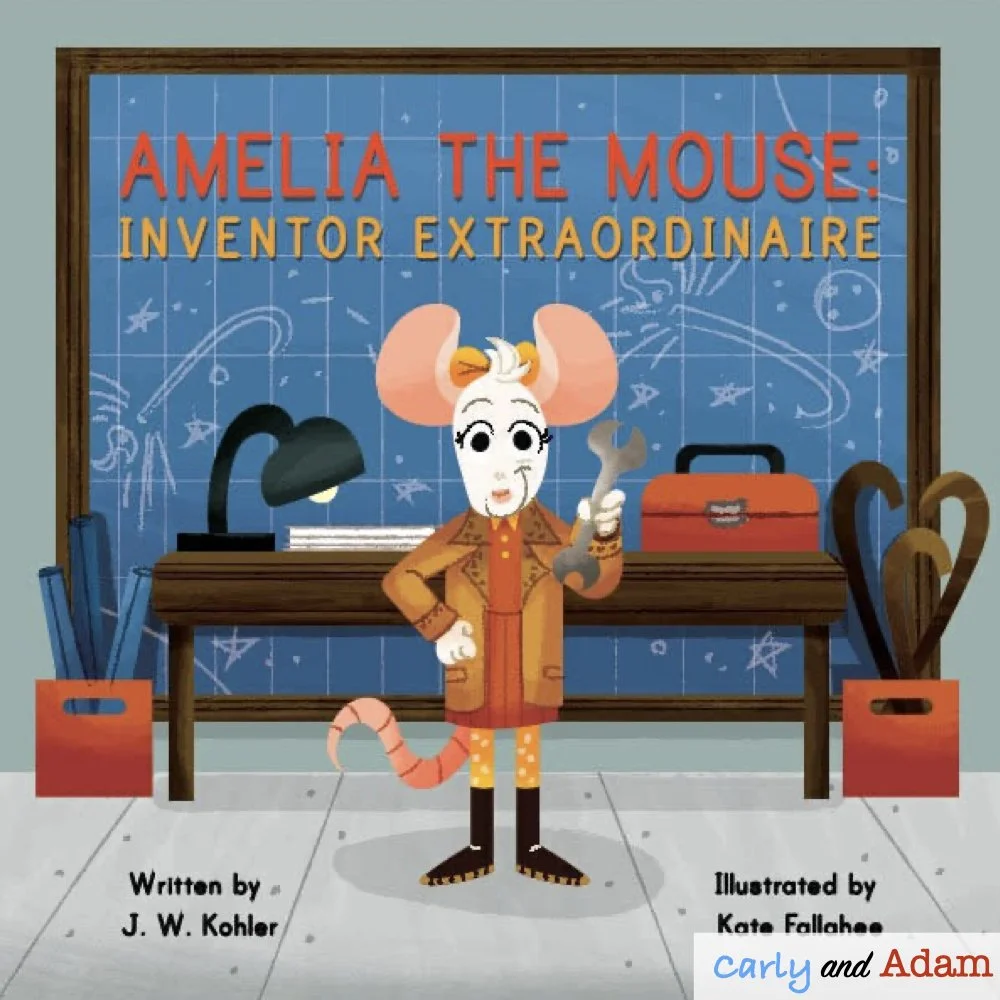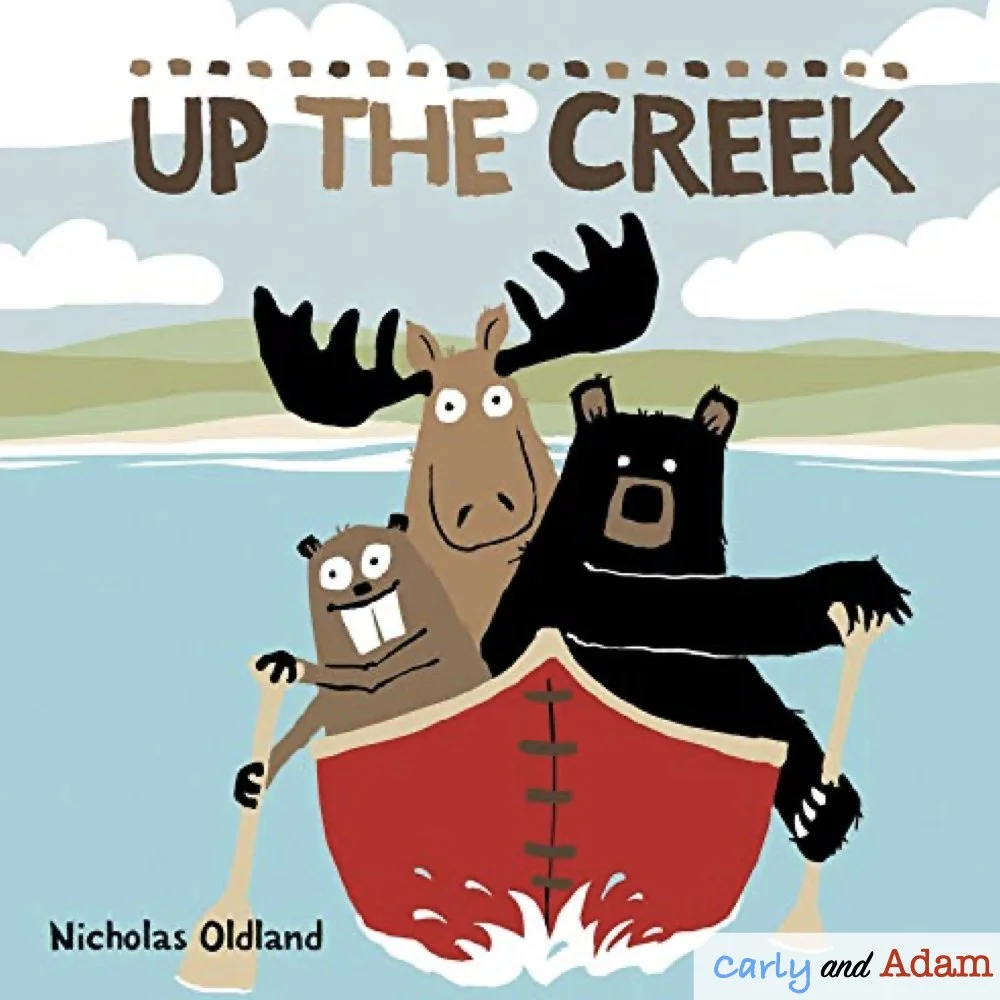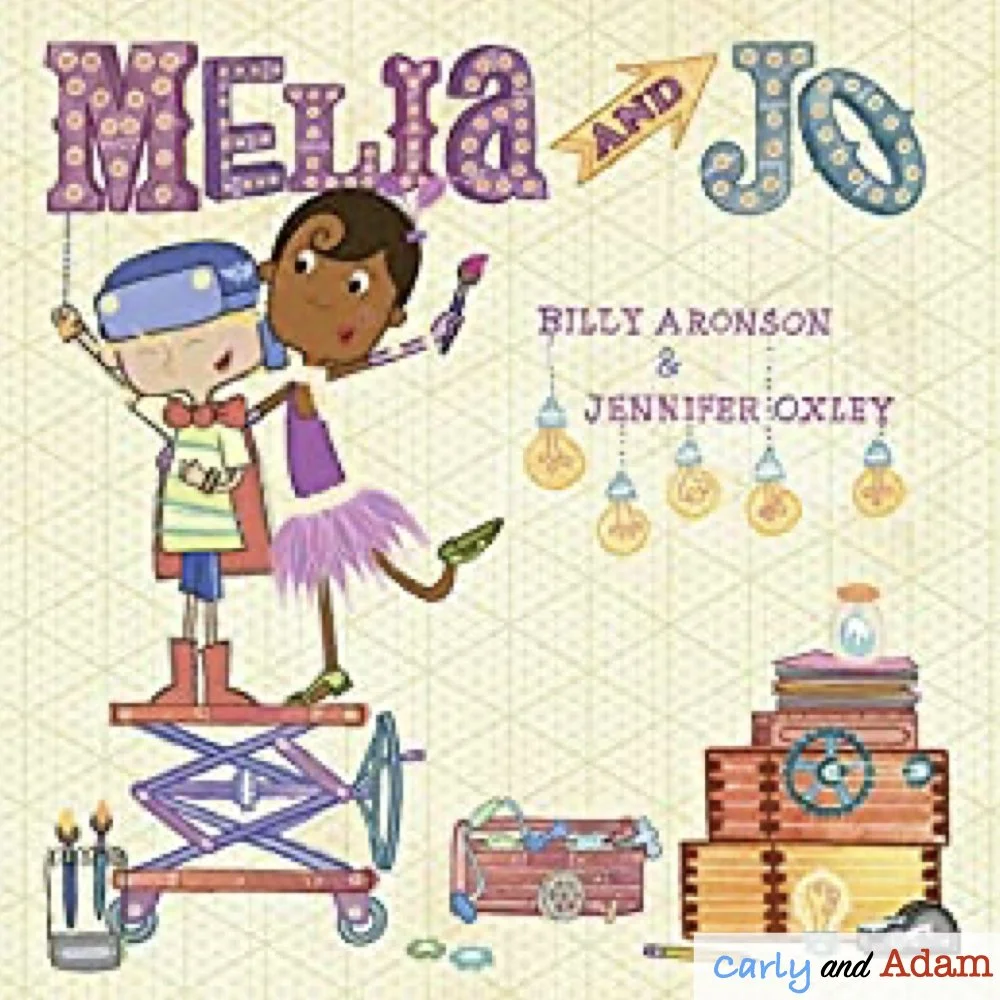10 STEM Read Alouds Perfect for Any Engineering Design Challenge
The following is a guest post from Dr. Jacie Maslyk.
10 STEM Read Alouds Perfect for Any Engineering Design Challenge
STEM activities are fun and engaging, but this type of learning is even better when it’s connected to a great children’s book. We’ve shared books that are aligned to social emotional learning and books with themes for every month of the year. This post will share 10 great read alouds for any elementary classroom with a few STEM and Maker activities for each book. Try one or try them all!
1. Amelia the Mouse Inventor Extraordinaire by J.W. Kohler
Amelia invents all sorts of things, from light-up shorts to a vacuum for your nose. She tries to create things that will make peoples’ lives easier. She really gets the chance to make a difference when Winston the rat visits her and asks her to invent something for him.
Design a cane with a unique feature. Build a prototype and get feedback on your design.
Explore with circuits and create your own LED wearables.
Create a design plan for an invention that you are thinking about. Sketch two options, in case your first one doesn’t work as planned.
2. Geraldine and The Most Spectacular Science Project by Sol Regwan
Geraldine was a silly girl and a little mischievous at school. She dreamed of being an astronaut. She also enjoyed making different gadgets. Geraldine uses her imagination and ability to make things when she enters the science competition at school—and wins!
Build a model of a rover that can land on Mars.
Design a rocket launcher and see how far it can fly.
Construct telescope glasses using recyclable materials, just like Geraldine.
3. The Dreamer by Il Sung Na
The story follows a pig who really enjoys birds and wants to be just like them. He tries to fly just like the birds, designing creations that would help him soar through the air. He even inspires his friends to come up with flying machines too.
Observe birds flying in the sky (or watch a video) and take notes about how their wings look and how they move.
Sketch two different flying devices that might help pig (glider, parachute, wings) then build a model of one of your designs.
Make and test some flying machines of your own—paper airplanes, whirlybirds, or hot air balloons and see which one flies to the farthest.
4. Up the Creek by Nicholas Oldland
In the story, Bear, Moose, and Beaver go on a boat trip together, although they encounter some different challenges. They struggle to balance in the boat and have a hard time paddling, too. In the end, the friends work together to get up the creek.
Design a boat using recyclable materials and see if it will float.
Create mini-figures for each character from the story so that they can fit in your boat.
Add two characters to your boat. How can you get it to balance? What if you added all three?
5. The Leaf Detective: How Margaret Lowman Uncovered Secrets in the Rainforest by Heather Lang
The Leaf Detective shares the story of Margaret Lowman and her lifelong interest in nature. When she was small, she explored twigs and leaves. She grew up visiting the Australian rain forest and studying all of the things that thrived there.
Collect leaves (or other items from nature) from around your school or home. Press, label, and research them as Meg did.
Create a graph to show the different items you collected. Organize them by shape, color, texture, or some other feature.
Build a model of the rainforest including the plants and animals that live there.
6. Twenty-One Elephants by Phil Bildner
When the Brooklyn Bridge was built, the people of New York were not convinced that the bridge was strong enough to travel across. A little girl named Hannah tried to convince people that it was ok. She called on circus owner P.T. Barnum who marched his twenty-one elephants across the bridge in a parade of confidence, showing everyone that it was safe.
Construct a suspension bridge using recycled materials.
Add weight to your bridge (maybe even some toy elephants). How much weight can it hold?
Build something that you might find at the circus (unicycle, trapeze, “big top” tent).
7. Pass Go and Collect $200 Real Story of How Monopoly Was Invented by Tanya Lee Stone
This famous board game was actually invented to teach people about how unfair some landowners were during the 1800s. The story explains how the game was improved over time, including the design and redesign of different versions of the game.
Create your own version of Monopoly using game pieces and street names that are unique to you.
Design a new board game, including writing the rules and directions.
Hack two existing games and combine them to make an entirely new game. Then share it with your friends, so they can play!
8. Melia and Jo by Billy Aronson
Melia is a curious tinkerer often creating new inventions. Then she meets her new neighbor Jo who sees things a little bit differently than Melia. This helps her to consider other ways to look at the way materials can be used.
Use the engineering design process to design an invention inspired by Melia’s gadgets.
Design and build a different device that could help to get Jo out of the tree.
Show students a close-up image or a unique object and ask them to imagine all the things it could be. Brainstorm and list all of the possibilities.
9. Made by Maxine by Ruth Spiro
Maxine takes old things and tries to make them better. She deconstructs and upcycles things, even for her new pet fish. Using her creativity and repurposing skills, Maxine finds a way to take her pet to school for the big pet parade.
Design and build a home for a pet that you would like to have.
Repurpose some existing materials and make something that will help your pet to have fun (exercise, play, or relax).
Plan a way to transport your pet to school by using recyclable materials.
10. How to Code a Rollercoaster by Josh Funk
In this colorful book, students will not only enjoy the adventure that the character and her robot go on, but they’ll also learn some coding along the way. The story, set at the amusement park, provides lots of opportunities for students to imagine and create.
Design a rollercoaster cart including features for safety, comfort, and excitement.
Create an amusement park game and include a prize that patrons can win.
Plan and make a treat that park visitors would enjoy and include an advertisement that would encourage people to buy your treat.
Combining STEM and Maker learning with children’s literature is a great way to engage your students. Whether you read aloud to your students every day or are looking for a fun way to incorporate a hands-on activity in your classroom, these fun read alouds will give you a great start.
For more STEM ideas, inspiration, and collaboration with other STEM teachers be sure to join our FREE Facebook group Elementary STEM Teachers with Carly and Adam!
We hope you have found this blog post helpful. To stay connected with Carly and Adam's teaching tips and classroom freebies be sure to follow us on Facebook, Pinterest, Teachers Pay Teachers, and subscribe to our blog!
*This blog post contains Amazon affiliate links. By clicking on the links and making a purchase, we may receive a small commission at no additional cost to you.
An educator for the last 23 years, Dr. Jacie Maslyk, has served as a classroom teacher, reading specialist, elementary principal, and assistant superintendent. She is the author of STEAM Makers: Fostering Creativity and Innovation in the Elementary Classroom, Connect to Lead: Power Up Your Learning Network to Move Your School Forward (ISTE), Remaking Literacy: Innovative Instructional Strategies for Maker Learning and Unlock Creativity: Opening a World of Imagination With Your Students. You can read more on her blog, Creativity in the Making, at www.jaciemaslyk.blogspot.com. Connect with Jacie on Twitter @DrJacieMaslyk or email her at jaciemaslyk@gmail.com .












